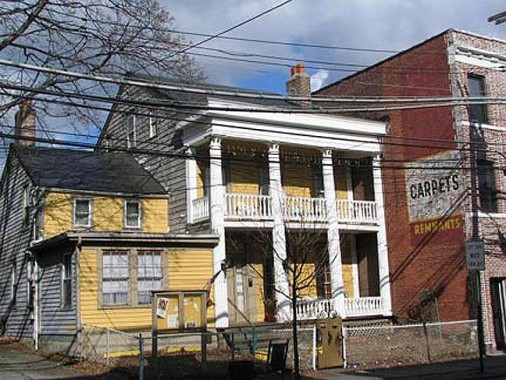If you missed FNY’s Stapleton tour in June 2014, you missed some very interesting architectural highlights!
In 1833, Minthorne Tompkins, son of the late Vice President under James Monroe, Daniel D. Tompkins, and William J. Staples (for whom Stapleton is named) bought a tract of land from Cornelius Vanderbilt and his family that had originally been part of the Cornelius Corsen patent; it was surveyed, subdivided, and, in September 1834, the lot of 390 Van Duzer Street was sold to Richard G. Smith, who had this house built soon afterwards. Richard Smith’s wife was Susannah M. Tompkins, sister of Minthorne. A dead end along Van Duzer Street, Smith Terrace, is named for this Smith.
An unusual feature of the building is what is called a spring eave. The overhang spring-eave began to appear in New Netherland about the middle of the 17th century, possibly as a means of protecting the font wall from the elements. It was often only a simple cantilevered projection but was sometimes supported by columns or posts. On Staten Island, this type of eave was used well into the 19th century by builders and architects.
8/19/14
